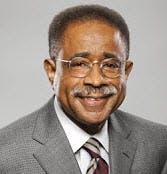In 1994, I took on the challenge of introducing the concept of diversity in business to my bank’s leadership.
Banks were coming under fire for their apparent discriminatory lending practices, and were struggling to figure out how to make the necessary changes in a way that honored the business strategy.
Enter Dr. R. Roosevelt Thomas, whose books still sit on my shelf, and I refer to them yet today.
Dr. Thomas passed away earlier this month at a very young age, and with the exception of a small article in Diversity Executive magazine which made its way to LinkedIn, I couldn’t find any other information on him. So I thought I would pay tribute here to an individual who influenced my path through the broader discipline of human resources by heightening my personal sensitivity to the importance of diversity of thought.
Linking diversity to business
Dr. Thomas linked diversity to business, plain and simple. Of course, diversity at that point tended to be focused on race and gender, but his bottom line was that having a diverse group of employees that were similar to the diversity in the customer base was good business practice. The organization could make better business decisions because they were thinking like the customer.
At that time, we were still focused on “sensitivity” – recognizing that everyone had a different history, experience and perspective, and that was OK. To prepare for the diversity assignment in 1994, I attended a week long workshop that was part of IBM’s corporate-wide diversity program.
The first few days were uncomfortable, dragging what had typically gone unsaid into the open. By the end of the week, the diverse group had embraced me even though I was an outsider, as we shared experiences and learned about each other.
I will never forget a statement that one of the African American men made during a facilitated discussion.
He said that when he was teaching his teen-aged son to drive, he had one additional teaching point that he had to make. He told his son that if he were ever stopped by a policeman, he needed to make sure that he kept his hands on the wheel in plain sight, otherwise the police would assume he was going for a weapon, and might shoot. He said that he learned this lesson the hard way when a friend’s son encountered just such a situation.
That was certainly an eye-opener to me, and was the first time I realized that everyone wasn’t like me, didn’t have the same experiences or context. It painted a bold picture of a world I had never imagined, and pushed the concept of “different” to a whole new level in my mind.
Educating others to think differently
Roosevelt Thomas helped redefine the word “different.” Instead of different being, well, different, it was actually an advantage that provided an edge to business. Thinking differently, sparked by different perspective and experiences, created innovation and alignment.
Diversity today has grown exponentially, as our world shrinks and cultures intermingle. My son, preparing to go to the Middle East, had the opportunity to learn from Afghani instructors about the culture that he would encounter. Something as simple as giving feedback without appropriate respect could be offensive to a Middle Easterner. That was a wake-up call to my son to take a hard look at his style of giving feedback, because the consequences of doing it wrong could be devastating.
While Dr. Thomas paved the way for diversity to come into the board room, we still have a long way to go. Today, diversity has little to do with race or gender as it did in the early 1990s, and much more to do with understanding differences that can occur even in homogenous groups, and respecting and honoring what those difference can do to the collective whole.
In fact, I have found in my work as an HR professionals that conflict more often occurs because of hidden “differences” and the role of engaging in dialogue to identify the differences becomes a critical competency for HR professionals.
Without Dr. Thomas’ foresight, vision and ability to translate “softer” issues into business language, we might not be nearly as far along. His writing continues to have a presence on my “Must Read” list for HR professionals hoping to grow in their profession.
RIP, Dr. Thomas.
This originally appeared on the ….@ the intersection of learning & performance blog.
